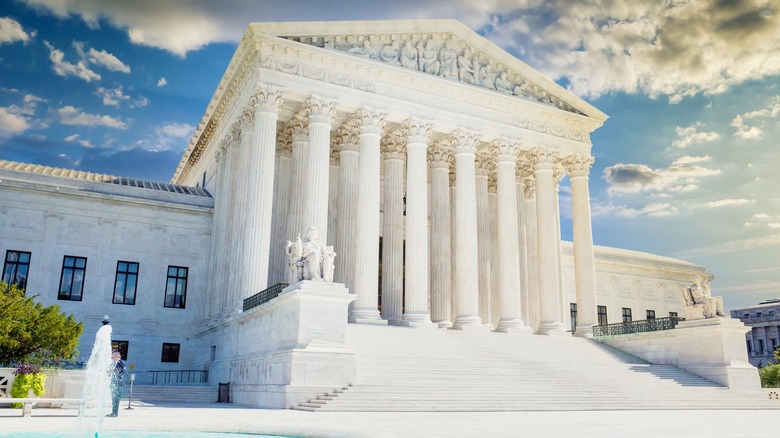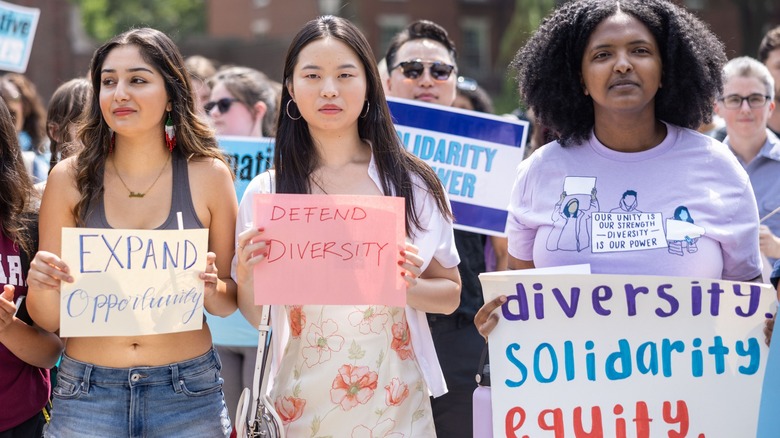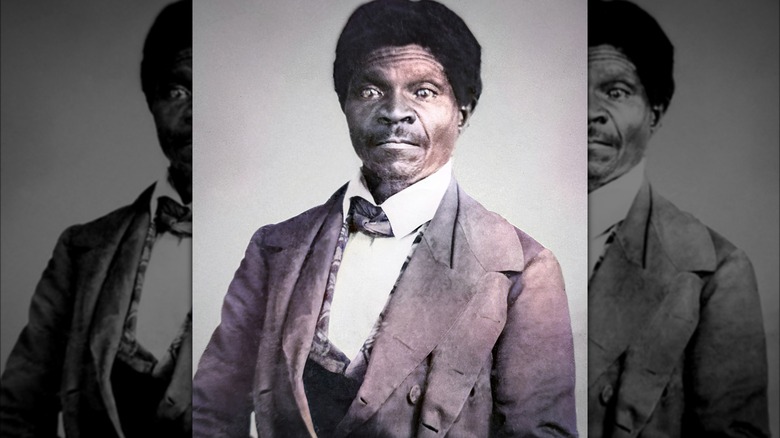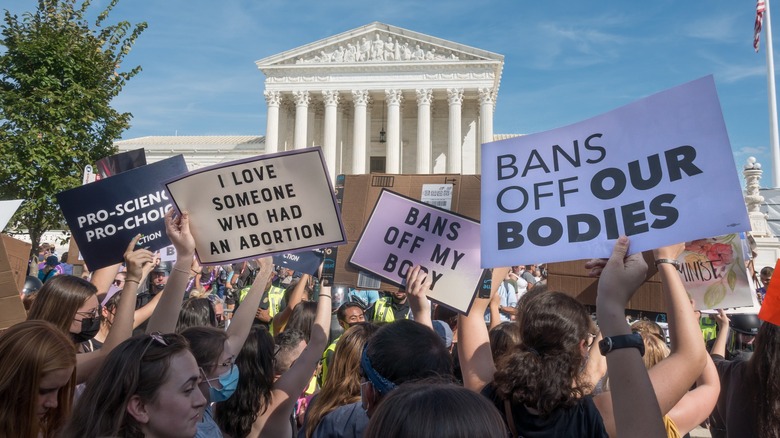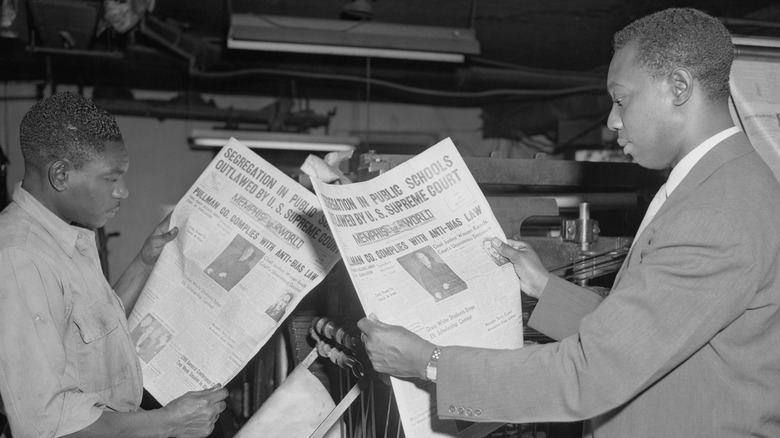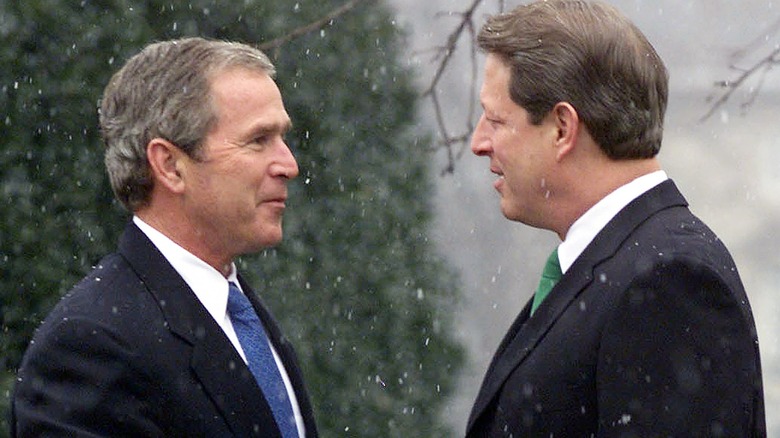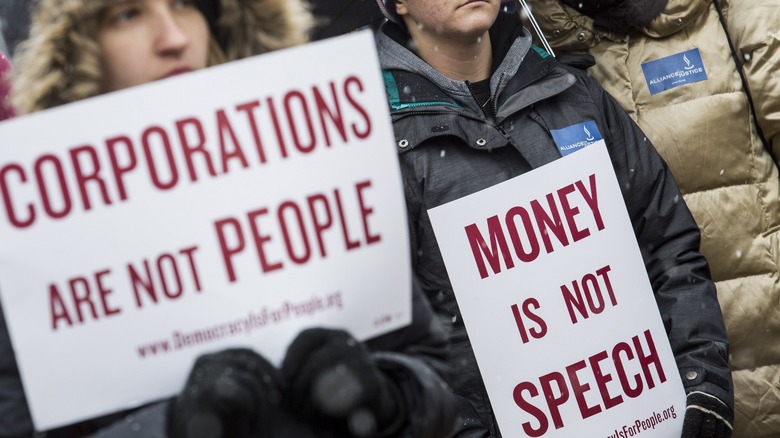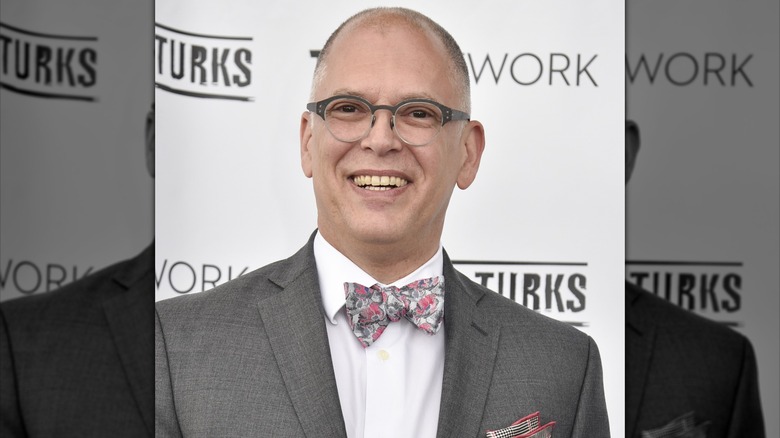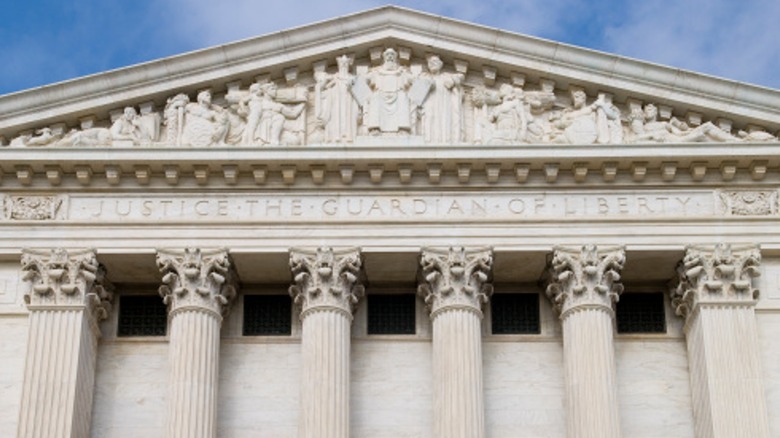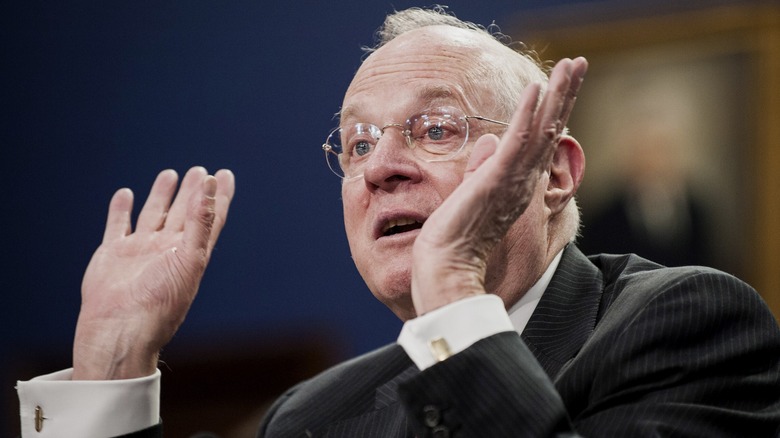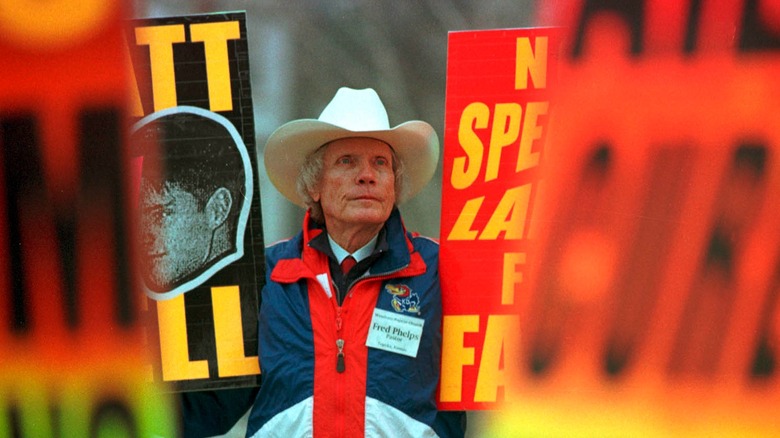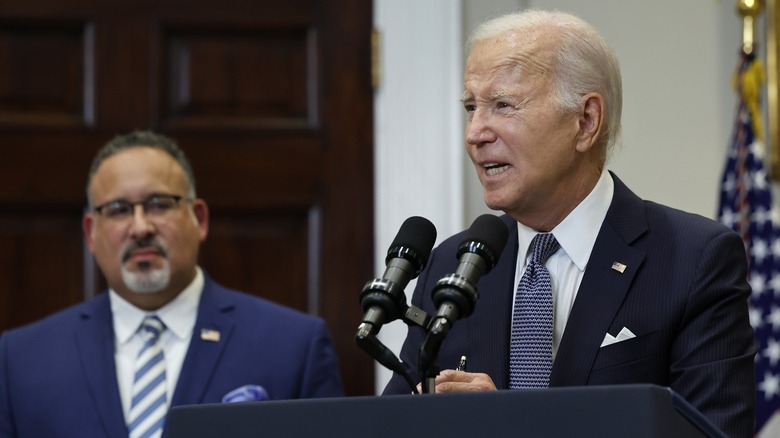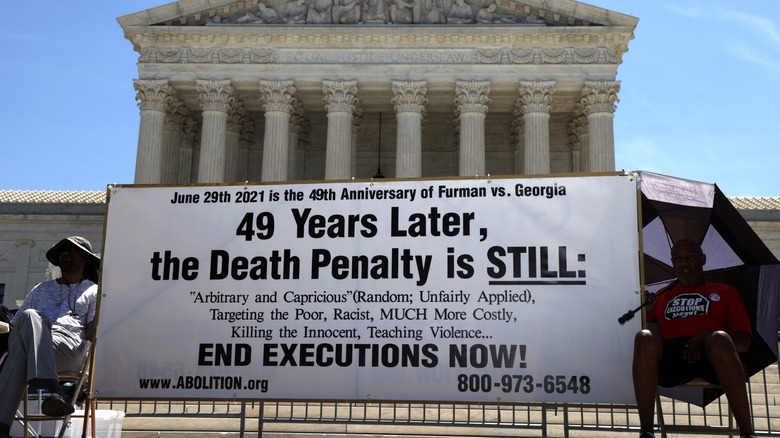The Most Controversial Supreme Court Decisions
The institution of the Supreme Court is almost as old as the United States itself. The Supreme Court was created by the Judiciary Act of 1789 and was originally composed of just six justices, instead of the nine that sit on the bench today. Justices to the Supreme Court hold lifetime appointments that can only be revoked through an impeachment process, but that has happened only one time in the entire history of the court. The justice in that case, Samuel Chase, was acquitted during his trial in the Senate.
Currently, the Supreme Court consists of nine members, eight Associate Justices and one Chief Justice, all of whom are presidential appointments. Surprisingly, it's not a requirement that a Supreme Court Justice be a lawyer or even a law school graduate. At least one of them, James F. Byrnes, was not a high school graduate — though he did pass the bar.
Justices can excuse themselves from certain cases, but in order for the Court to render a decision, a minimum of six must hear a case. Throughout its storied history, the Supreme Court has been both revered or scorned, with people alternately praising and condemning the same ruling depending on their views. Looking back, these are some of the most controversial Supreme Court decisions in history.
Students for Fair Admissions v. Harvard College
In one of the most talked about ruling in recent history, the Supreme Court's decision in the Students for Fair Admissions Inc. v. President and Fellows of Harvard College case was extremely contentious. The Supreme Court decided the case 6-3, in favor of Fair Admissions, ruling that both Harvard and the University of North Carolina's admissions programs that considered race were in violation of the 14th Amendment. The case was one of the most anticipated on the court's docket for the 2023 term, and it became headline news the second the court announced its judgment.
The two cases revolved around admissions policies at both Harvard and North Carolina, which used Affirmative Action programs to boost the number of Black students admitted. This was widely seen as a way to rectify past discrimination in higher education. However, it was also controversial because opponents consider it a form of discrimination against other students.
What made the case more contested, was that the court had previously upheld race-conscious admissions policies several times. Yet, with the new conservative tilt to the court, a previous 4-3 decision in favor of the policies in 2016, turned into a 6-3 decision against them in 2023. The three dissenting liberal justices expressed serious reservations about the majority's decision, but conservative politicians and justices widely hailed it as a correct and just verdict.
Dred Scott v. Sandford
Few Supreme Court cases inspire the amount of vitriol and disgust as that of the infamous Dred Scott v. Sandford case from 1857. The case centered around Scott, an enslaved person originally from Missouri. In the early 1830s, Scott had been taken to Wisconsin (a free state) by his enslavers John and Harriet Emerson, but in the 1840s he was taken back to the South. Upon John's death, Scott tried to buy his freedom from Harriet, but when that failed he sued her in Missouri state court.
Scott's lawyers argued that when the Emersons had taken him to Wisconsin they had inadvertently freed him. However, the Missouri Supreme Court ruled against Scott. Scott then sued Harriet's brother John Sanford, the controller of John Emerson's estate, in federal court. The case eventually made it all the way to the Supreme Court, which ruled 7-2 against Scott.
As part of the decision, Chief Justice Roger Taney wrote that not only did Scott not have standing to sue in the first place, but that African Americans were property and not eligible for American citizenship. He also declared that Congress had no authority to ban slavery from any federal territories, thus invalidating anti-slavery laws. Critics in the North seized on the ruling as a disgrace, and many states ignored it or repudiated it in their state courts. Eventually, the 14th Amendment rendered the decision void, but it still stands as one of the greatest injustices in Supreme Court history.
The Supreme Court and abortion
In what may have been the most disputed decision in modern Supreme Court history, in 2022 the court reversed the longstanding precedent held by Roe v. Wade. The decision struck down federal protections for abortion, allowing states to regulate it as they saw fit. Immediately, a wave of anti-abortion laws crept up in state legislatures. By June 2023, more than a dozen states had abortion laws in effect, with more pending court challenges in other states. In contrast, many other states also strengthened their abortion protections following the ruling.
Historically, contraceptives had been illegal in the United States from the late-19th century until 1965, when the Supreme Court struck down restrictions on them for married people in Griswold v. Connecticut. In 1973, the court decided in Roe v. Wade that the 14th Amendment gave women the right to seek an abortion, ruling some restrictions on abortion were a violation of women's right to privacy. In 1992, Roe v. Wade was redefined by Planned Parenthood v. Casey, when even more restrictions were struck down as unconstitutional.
Protections against abortion bans were considered legal precedent until 2022 when the now conservative-leaning Supreme Court ruled in Dobbs v. Jackson Women's Health Organization that abortion was not a protected right under the Constitution. This overturned both Roe v. Wade and Planned Parenthood v. Casey and was slammed by critics for its overturning of precedent, which they correctly argued would lead to the criminalization of abortion in many states.
The Supreme Court and segregation
On the list of abhorrent Supreme Court decisions, the infamous Plessy v. Ferguson case from 1896 stands out among the rest. Widely known now as the "separate but equal" decision, the case essentially made racism legal against Black Americans. While the Civil War was successful in freeing Black Americans from the bondages of chattel slavery, it only gave them limited federal protections from the racism still festering widely. This resulted in a patchwork of laws throughout the country, known as Jim Crow laws, which allowed for the legal discrimination of Black citizens.
The Plessy v. Ferguson decision came as the result of an 1892 lawsuit filed by Homer Plessy over Louisiana's segregation laws. Plessy lost his lawsuit 8-1 in the Supreme Court, which held that separate accommodations for different races were legal, essentially giving the go-ahead for Jim Crow legislation. In the early-1900s, Civil Rights activists formed the National Association for the Advancement of Colored People (NAACP), which fought to challenge racist laws in court.
After a few successes in the 1930s and early 1950s, the NAACP won the big one with Brown v. Board of Education in 1954, which got rid of "separate but equal" once and for all. Unsurprisingly, segregationists in the country were extremely upset at the ruling, which resulted in the desegregation of everything, including public schools. Today, the Plessy decision is widely considered one of the court's worst, with Brown earning the distinction as one of the best.
Bush v. Gore
While it has now been largely overshadowed by events in the 2016 and 2020 elections, the 2000 Presidential Election was anything but smooth sailing. That year, George W. Bush took on then-Vice President Al Gore. The race was extremely close and Gore actually won the popular vote, but Bush was the one to ultimately take the election, and the Supreme Court was a big reason why.
It all has to do with Florida. The vote totals for Bush and Gore in Florida were extremely close, within 0.01%, necessitating a recount under Florida State law. The recount showed that Bush was ahead but by a razor-thin margin. Of the six million votes cast in the election, less than 400 separated Bush and Gore. The Gore campaign wanted hand recounts to commence in certain counties, and several ballots were not filled out correctly, leading to disputes over whether they should be counted or not.
The Florida Supreme Court ruled in favor of the hand recounts statewide, but the case eventually made it to the U.S. Supreme Court as Bush v. Gore. They ruled — in an unsigned opinion — that the hand recounts could not take place in time. This all but handed the election to Bush, as Florida's 25 electoral college votes were the deciding factor. The public and the dissenting Justices heavily criticized the decision on its legal footing, and it still stings today for many Democrats and Gore supporters.
Citizens United v. Federal Elections Committee
For many observers, the Supreme Court's decision in the Citizens United v. Federal Elections Committee (FEC) was one of the most damaging for election integrity. The court came to a split 5-4 decision on the case back in 2010, and it was controversial from the instant the court agreed to take it up. The original lawsuit was related to the 2008 Presidential Election, during which Hillary Clinton took on Barack Obama in the Democratic Primary. At the time, election laws prohibited the amount of money corporations could spend on candidates leading up to elections.
A nonprofit organization, Citizens United, challenged several of these laws over their application to their 2008 film, "Hillary: The Movie." In a somewhat surprising decision, the Supreme Court ruled 5-4 that the FEC's election laws were unconstitutional. This invalidated other precedents that had previously upheld the constitutionality of those same laws. Immediately, critics of the decision worried about the impact it would have on clean elections, as it essentially lifted restrictions on how much corporations could spend on advertising.
The ruling led to the repeal of laws in more than a dozen states prohibiting corporate funds in elections. It has also led to other rulings that gutted even more election finance laws, allowing more dark money, or money that does not publicly list a donor, into elections. It's impossible to know the full effect of the Citizens United ruling, but many argue it has severely hurt election integrity.
Obergefell v. Hodges
Known today as the case that legalized gay marriage at the federal level, Obergefell v. Hodges was one of the most groundbreaking, and thus contentious, rulings in history. The Supreme Court ruled in favor of Jim Obergefell and John Arthur James, a same-sex couple living in Ohio. The couple had gotten married in Maryland, but their home state of Ohio did not recognize their same-sex marriage. Gay marriage was legal in Maryland but not in Ohio, leading to the dispute.
The couple sued for their marriage to be recognized in Ohio, and were successful at lower levels before their case moved up to the Supreme Court. James passed away during the litigation, but Obergefell was there to see it through all the way to the top court, which ruled in his favor 5-4. The ruling was surprising because it was authored by Justice Anthony Kennedy, a conservative Justice who sided with his liberal colleagues.
The conservative Justices criticized the ruling, with each of them writing their own dissents. Ever since the ruling, conservatives have taken aim at overturning the precedent, with Justice Clarence Thomas openly stating he wanted to revisit the Obergefell decision in a 2022 decision on abortion rights.
Lochner v. New York
In one of the most significant pro-business rulings from the labor movement of the early-20th century, even today Lochner v. New York is still a reviled Supreme Court decision. The ruling on the case dates back to 1905 when the court agreed with bakery owner John Lochner that the New York Bakeshop Act of 1895 was unconstitutional. New York had enacted the Bakeshop Act to combat hazardous working conditions among bakers, which were some of the worst in the entire city. Not only did bakers work incredibly long hours, but the conditions they had to work under were very poor and often dangerous. The law capped the number of hours some bakers could work at 60, which was still a considerable reduction from the 74+ hours many of them worked before.
Lochner was found guilty of violating the Bakeshop Act but appealed his conviction all the way to the Supreme Court, which sided with him. Lochner successfully argued that the act infringed on his freedom to contract with his workers and that the act was somehow not a public health measure, even though it clearly was.
The ruling in the Lochner case was very controversial among labor organizers and bakers but it stood until the 1930s when new Progressive legislation made it void. The only people who really liked the decision were bakery owners and profiteers, who probably saw it as a license to work their employees to death with little legal recourse.
The Supreme Court and sodomy
The legal history of gay rights in the United States is unfortunately complicated, and nothing illustrates that better than the Supreme Court's various rulings on the legality of sodomy. One of the biggest cases was Bowers v. Hardwick in 1986, during which Georgia's anti-sodomy laws were legally upheld by the court. The case was brought by Michael Hardwick, a gay man living in Atlanta who was arrested under Georgia's anti-sodomy law for having consensual sex with his partner. Hardwick unsuccessfully argued that the law unconstitutionally violated his right to privacy.
The court sided with the state of Georgia 5-4, but the dissenting justices thoroughly rebuked the majority in their comments. Bowers v. Hardwick set a precedent legalizing forms of discrimination against gay individuals, which was not overturned until Lawrence v. Texas in 2003. Lawrence v. Texas was based on a similar arrest as Hardwick's that had occurred in Texas in 1998. In that case, John Geddes Lawrence was arrested after engaging in consensual sex and was fined $200.
Lawrence appealed his conviction, and like Hardwick, his case also made it before the Supreme Court. However, this time the court ruled in Lawrence's favor and struck down the Texas law. This was less than two decades after the Bowers decision, but Justice Anthony Kennedy clearly explained why the Bowers case had been wrongly decided in his majority opinion. Gay supporters cheered the ruling, while opponents were upset about its supposed damage to the country's morality.
Snyder v. Phelps
Few groups rile up the anger and animosity of the Westboro Baptist Church. The church was founded in the 1950s by the Phelps family patriarch, Fred Phelps. Phelps was a pastor and a lawyer prior to his death in 2014, and he ironically had previously fought for Civil Rights on behalf of Black Americans. The Westboro Baptist Church is infamous for its anti-gay views, which have included picketing in public spaces since the 1990s. In the 2000s, their picketing became the subject of an important lawsuit, in which the Supreme Court upheld the Phelps family's right to picket funerals.
The Phelps family had been picketing the funerals of American soldiers killed in the War on Terror, over their beliefs that the U.S. was too accommodating of gay people and their lifestyles. One of these funerals was that of Matthew Snyder, a Marine. Snyder's father won a lawsuit against the church for $5 million (originally $10 million but remitted down), which Phelps appealed all the way to the U.S. Supreme Court.
The court decided in Phelps' favor, with only Justice Samuel Alito dissenting. The majority held that the case was a first amendment issue related to freedom of speech, and ruled that even though it may have been hard to hear, the picketing was not illegal and was protected. Even though many people understood the legal reasoning for the decision, they were nonetheless upset about the ruling favoring such a vitriolic hate group.
The Supreme Court strikes down student loans
Another highly contentious case from the recent Supreme Court docket was the 6-3 decision in the Biden v. Nebraska case that struck down President Joe Biden's student loan forgiveness program. Biden had announced the forgiveness program as a way to help eliminate debt for students struggling to pay off their student loans. Under his program, some students would have gotten as much as $20,000 in loans forgiven, and in all, more than $400 billion could have been canceled under the policy.
However, the Supreme Court instead ruled that Biden's Secretary of Education Miguel Cardona had exceeded his authority when he condoned the program. The main issue was a 2003 law known as the Heroes Act, which Biden and Cardona argued gave them the authority, but the court disagreed with them. The court partly relied on the "major questions" legal doctrine, which some argue is not even a valid legal principle. Leading up to the decision there were protests outside of the court building, and many people were extremely upset that the program was struck down.
The Supreme Court and the death penalty
It probably comes as little surprise, but the Supreme Court and the death penalty have a very controversial history together. In 1972, the court ruled that the death penalty, as it was then being applied, was unconstitutional in the Furman v. Georgia decision. The court recognized the racist history behind the death penalty, ruling that it was cruel and unusual punishment under the Eighth Amendment. The ruling immediately impacted state laws regarding the death penalty throughout the country, essentially invalidating them for the time.
Proponents of the death penalty were upset over the ruling, and they immediately began looking for ways to circumvent the ban. They found their opening in the language of the decision which said the death penalty was only unconstitutional if it was not specifically and strictly applied. By 1976, the death penalty was already back on the Supreme Court's docket, but this time the court sided with Georgia instead of against them in Gregg v. Georgia. This made the death penalty federally legal again under certain circumstances, which this time outraged death penalty opponents instead of supporters.
